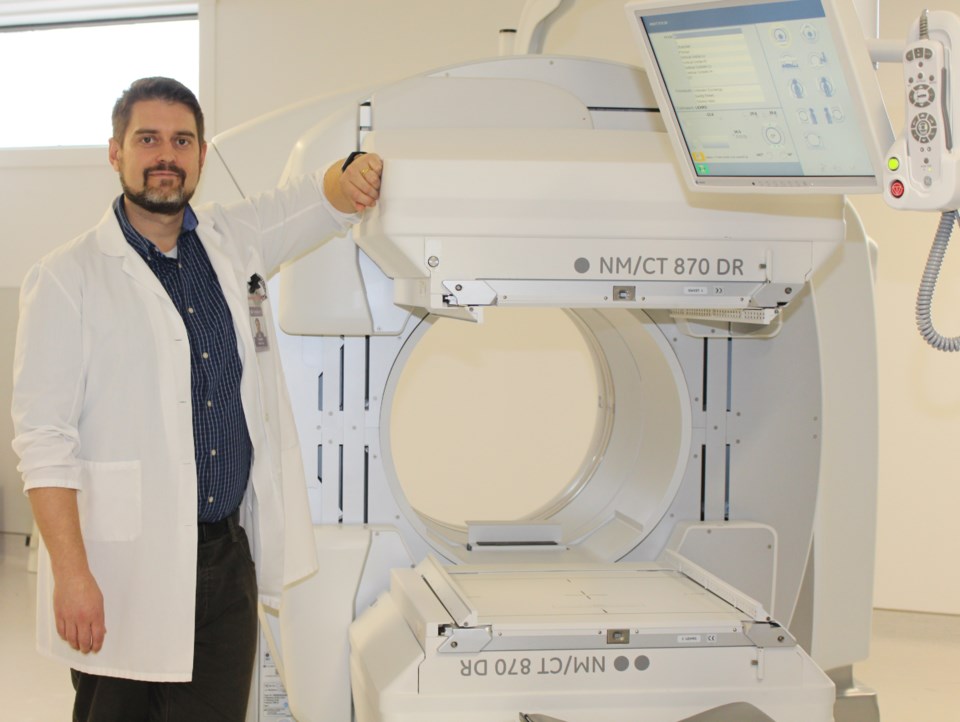Editor's Note: This article has been amended since its original publication.
The newly renovated nuclear medicine department at Orillia Soldiers' Memorial Hospital (OSMH) is an "integral component of the comprehensive medical imaging services" offered in Orillia and by many large hospitals in Canada, explains Kate Smith, the director of diagnostic imaging and therapeutic services for OSMH.
"Initially, the service (at OSMH) utilized a SPECT gamma camera, which underwent a significant upgrade to a state-of-the-art SPECT CT unit in 2015," she explained. "This advanced three-dimensional imaging technology not only reduces radiation exposure but also enhances operational efficiency."
The newly renovated nuclear medicine suite at OSMH re-opened in July of 2023 with an upgraded SPECT CT system, enabling it to perform diagnostic CT scans.
"This strategic upgrade ensures that OSMH maintains redundancy in diagnostic CT capabilities, both for planned maintenance and unforeseen system downtime," Smith explained.
OSMH performs approximately 1,000 nuclear medicine scans annually, which benefits the regional oncology and kidney care programs, Smith explained.
The service offers a range of scans including bone, sentinel node injections, kidney, lung, and cardiac scans, enabling patients in Simcoe County and Muskoka to receive specialized care without having to leave the region.
"We inject radioactive tracers to visualize organ systems in real-time," Smith explained. "Unlike CT or MRI which view anatomy, nuclear medicine looks at physiology – how your organs are functioning."
Since reopening in July, nuclear medicine wait times have notably decreased, Smith says.
"OSMH’s nuclear medicine department is vital for accurate diagnosis, personalized treatment, and monitoring of various medical conditions, offering non-invasive, functional insights that complement traditional imaging techniques," she said.
"The comprehensive diagnostic services play a crucial role in attracting and retaining specialist physicians in the area," said Smith.
Colin Cole, the nuclear medicine charge technologist and radiation safety officer at OSMH, got into the field by shadowing a technologist at Peterborough Regional Health Centre back in 2007.
"Nuclear medicine imaging takes more time than other imaging. You get to learn people’s stories, and everyone has an interesting story to tell," he said. I particularly loved that it was a way to put the science and laboratory skills I’d learned in my undergraduate degree to use, but still interact with people as a part of my career."
Cole, 39, says the role as charge technologist of nuclear medicine at OSMH is rewarding.
"I can help design the program to what I know is the most efficient model possible," he explained. “I work directly with radiologists and surgeons to make sure that they are seeing exactly what they need to see. I can affect change for the positive for the hospital and the community, and I find that incredibly rewarding."



